With the release of the March 2012 U.S. retail sales figures from the NPD Group last week, the search continues for a silver lining of any kind from that side of the market. It is truly grim if you're working in brick-and-mortar, and it's likely to feel that way for a while. Hardware sales, for example, were down in practically every conceivable way. The leading console, the Xbox 360, fell from 431,000 systems to 371,000 systems, a decline of 14 percent. PlayStation 3 hardware sales were down about 9 percent from their total last year. PlayStation Portable (PSP) sales have utterly collapsed and Nintendo DS sales this March weren't even a quarter of the level they were a year ago. (As a matter of staying honest, let me say that last month I predicted that PlayStation Vita sales would be a little higher in March than they were during the launch in February. I was wrong, and it appears that they declined to between 205,000 and 215,000 last month, although precise figures are not available.) Compounding the revenue losses are underlying decreases in average hardware prices. Across all systems, average hardware prices fell about 3 percent per unit, year-over-year. The PlayStation 3 is selling for about $50 less on average than it did during March 2011. The Wii is selling for about $149 per system, a decrease of $30 from its mean price a year ago. Together the lower volume and lower prices delivered a 35 percent drop in hardware revenue for the month of March 2012 in the U.S., from $494.5 million in 2011 to $323.5 million this year. Beneath those shocking top-line figures are some interesting trends I want to highlight this month. Yes, everyone is suffering, but not everyone is suffering equally. Staying on hardware for the moment, I want to look at the trend in hardware for the past couple of years. The specific measure I've chosen here is a trailing-twelve month (TTM) rate, or annualized rate. So, for example, on the graph below the PlayStation 3 has a sales rate of just over 4 million units per year as of March 2012. That means that in the 12 months from April 2011 to March 2012, inclusive, just over 4 million PlayStation 3 systems were sold. As a month drops off the back end of the 12-month moving window, if a stronger month replaces it on the front end, then the rate goes up. If a weaker month replaces it, then the rate goes down.  There are several features here I've covered before, but are worth mentioning as landmarks so you can get your bearings in the graph above. First, at the very far left of the graph we can see the PlayStation 3 (red) benefit from the August 2009 introduction of the PS3 Slim and the corresponding $300 system price. The zig in the Wii (light blue) sales at the end of 2009 is the record 3.8 million system month it had in December of that year. You can see the corresponding decline precisely a year later in December 2010. And, as one last marker before discussing recent sales, there is a marked increase in Xbox 360 (green) sales starting in June 2010, at the introduction of the Xbox 360 S Model, continuing through the introduction of Kinect at the end of that year and into 2011. Now, take a moment to look at the end of 2011 and the first few months of 2012. There are precipitous declines in the sales of both the Nintendo DS (purple) and the Nintendo Wii, much steeper than anything else on this graph. For the Nintendo DS (which in this case means the DS Lite, DSi, and DSi XL), the reason seems straightforward: there is a successor system that is priced competitively. In fact, if you look at all Nintendo handheld system sales, the 3DS has helped provide a reasonably smooth transition. Just look at the graph below where I've isolated the Nintendo DS (purple) hardware curve from the previous figure, but added in a combined rate curve for the Nintendo DS and 3DS hardware together.
There are several features here I've covered before, but are worth mentioning as landmarks so you can get your bearings in the graph above. First, at the very far left of the graph we can see the PlayStation 3 (red) benefit from the August 2009 introduction of the PS3 Slim and the corresponding $300 system price. The zig in the Wii (light blue) sales at the end of 2009 is the record 3.8 million system month it had in December of that year. You can see the corresponding decline precisely a year later in December 2010. And, as one last marker before discussing recent sales, there is a marked increase in Xbox 360 (green) sales starting in June 2010, at the introduction of the Xbox 360 S Model, continuing through the introduction of Kinect at the end of that year and into 2011. Now, take a moment to look at the end of 2011 and the first few months of 2012. There are precipitous declines in the sales of both the Nintendo DS (purple) and the Nintendo Wii, much steeper than anything else on this graph. For the Nintendo DS (which in this case means the DS Lite, DSi, and DSi XL), the reason seems straightforward: there is a successor system that is priced competitively. In fact, if you look at all Nintendo handheld system sales, the 3DS has helped provide a reasonably smooth transition. Just look at the graph below where I've isolated the Nintendo DS (purple) hardware curve from the previous figure, but added in a combined rate curve for the Nintendo DS and 3DS hardware together.  I believe that if Nintendo can keep the system supplied with its flagship software, and provide ample room for third parties to grow, the decline in Nintendo DS hardware sales shouldn't be a concern in the near term. Sales could even grow significantly if there is a revision of the 3DS hardware late this year or early next year (approximately in line with the timeframe for the Nintendo DS Lite revision relative to the original Nintendo DS launch). As for Wii sales, we are seeing the final stage of that system's life. Its annualized hardware sales rate has been declining for years now, but that slide has accelerated in the past few months. Whereas the 3DS has kept Nintendo's handheld hardware rate above 7 million a year, no successor for the Wii has yet been launched. The Wii sales rate is right at 4 million a year (down from a peak of 10.9 million a year) and will likely fall further before the expected release of the Wii U later this year. As for the HD consoles, the Xbox 360 and PlayStation 3, the TTM curves have smoothed out some of the declines that those platforms have seen this year. I am still concerned about where sales will end up later this year, especially during the fallow summer months, but for now those platforms are not yet significantly below their historically high annualized sales rates. I want to now look briefly at software, using the same kind of TTM approach. Here is the corresponding software graph over the same period as the hardware graphs shown above. Remember, these are annualized rates, so the height of a graph represents the total software revenue for the previous 12 month window.
I believe that if Nintendo can keep the system supplied with its flagship software, and provide ample room for third parties to grow, the decline in Nintendo DS hardware sales shouldn't be a concern in the near term. Sales could even grow significantly if there is a revision of the 3DS hardware late this year or early next year (approximately in line with the timeframe for the Nintendo DS Lite revision relative to the original Nintendo DS launch). As for Wii sales, we are seeing the final stage of that system's life. Its annualized hardware sales rate has been declining for years now, but that slide has accelerated in the past few months. Whereas the 3DS has kept Nintendo's handheld hardware rate above 7 million a year, no successor for the Wii has yet been launched. The Wii sales rate is right at 4 million a year (down from a peak of 10.9 million a year) and will likely fall further before the expected release of the Wii U later this year. As for the HD consoles, the Xbox 360 and PlayStation 3, the TTM curves have smoothed out some of the declines that those platforms have seen this year. I am still concerned about where sales will end up later this year, especially during the fallow summer months, but for now those platforms are not yet significantly below their historically high annualized sales rates. I want to now look briefly at software, using the same kind of TTM approach. Here is the corresponding software graph over the same period as the hardware graphs shown above. Remember, these are annualized rates, so the height of a graph represents the total software revenue for the previous 12 month window.  Here we can see that the steep decline in Wii hardware sales during Christmas 2010 did not have as large an effect on the platforms software revenues. However, the same cannot be said of Christmas 2011 and early 2012, when software revenue began to fall even faster than it had for the previous two years. Particularly interesting to me is the jump in software revenue for the Xbox 360 during the last quarter of 2011. There was no corresponding jump in hardware sales during that period, but there were a few key exclusives (Gears of War 3 and Forza 4) along with many big cross-platform games. It seems reasonable to me to speculate that the increase in Xbox 360 software sales was due to that platform taking a larger share of cross-platform games, while also building on the hardware gains of the preceding 12 months. That is, the hardware base gains from mid-2010 through the end of 2011 had been adding modestly to the software sales over that long period. However those gains were particularly important when those consumers returned to buy new software for the holidays. Just as notable, that sales level seems to have been maintained through the beginning of 2012. Finally, one last comparison among the big three hardware platforms. According to data provided to me by the NPD Group, the tie ratio for the Xbox 360 has increased to 9.2 units of software per system as of March 2012. Back in December 2011, the ratio for the Xbox 360 stood at 9.1 units per system. For the Wii the ratio has increased slightly to 7.8, up from 7.7 in December. The PlayStation 3 rate remained constant at 8.3. Based on what we know about the installed bases for each platform, a total of 309-312 million units of Xbox 360 software have been sold life-to-date, up from 296-299 million at the end of 2011. The Wii is close behind, with 304-308 million units of software, up from 296-300 million at the close of December. When comparing the Xbox 360 and the Wii, I'd remind you that the Wii has had one fewer year on the market than Microsoft's console has. Approximately 172-174 million units of PlayStation 3 software have been sold so far in the U.S., an increase of about 7 million units since 2011. In my next column, I want to take a broader view of the software market, with a diminished emphasis on the specific platforms and more on total units, new releases, and whether the industry is becoming, in the words of Wedbush analyst Michael Pachter, a "hit-driven business."
Here we can see that the steep decline in Wii hardware sales during Christmas 2010 did not have as large an effect on the platforms software revenues. However, the same cannot be said of Christmas 2011 and early 2012, when software revenue began to fall even faster than it had for the previous two years. Particularly interesting to me is the jump in software revenue for the Xbox 360 during the last quarter of 2011. There was no corresponding jump in hardware sales during that period, but there were a few key exclusives (Gears of War 3 and Forza 4) along with many big cross-platform games. It seems reasonable to me to speculate that the increase in Xbox 360 software sales was due to that platform taking a larger share of cross-platform games, while also building on the hardware gains of the preceding 12 months. That is, the hardware base gains from mid-2010 through the end of 2011 had been adding modestly to the software sales over that long period. However those gains were particularly important when those consumers returned to buy new software for the holidays. Just as notable, that sales level seems to have been maintained through the beginning of 2012. Finally, one last comparison among the big three hardware platforms. According to data provided to me by the NPD Group, the tie ratio for the Xbox 360 has increased to 9.2 units of software per system as of March 2012. Back in December 2011, the ratio for the Xbox 360 stood at 9.1 units per system. For the Wii the ratio has increased slightly to 7.8, up from 7.7 in December. The PlayStation 3 rate remained constant at 8.3. Based on what we know about the installed bases for each platform, a total of 309-312 million units of Xbox 360 software have been sold life-to-date, up from 296-299 million at the end of 2011. The Wii is close behind, with 304-308 million units of software, up from 296-300 million at the close of December. When comparing the Xbox 360 and the Wii, I'd remind you that the Wii has had one fewer year on the market than Microsoft's console has. Approximately 172-174 million units of PlayStation 3 software have been sold so far in the U.S., an increase of about 7 million units since 2011. In my next column, I want to take a broader view of the software market, with a diminished emphasis on the specific platforms and more on total units, new releases, and whether the industry is becoming, in the words of Wedbush analyst Michael Pachter, a "hit-driven business."
Latest NPD results paint grim picture of current U.S. retail game landscape
April 17, 2012

Tags:
2012
Subscribe to our newsletter
About JikGuard.com
JikGuard.com, a high-tech security service provider focusing on game protection and anti-cheat, is committed to helping game companies solve the problem of cheats and hacks, and providing deeply integrated encryption protection solutions for games.
Top

The Chinese Room is independent again – here's how it happened
July 22, 2025
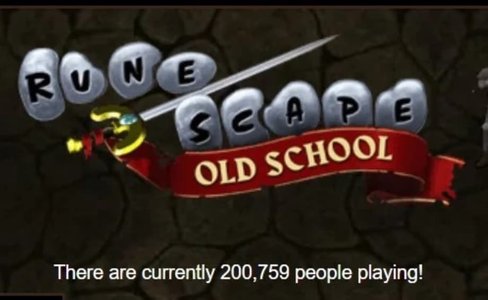
OLD SCHOOL RUNESCAPE Hits Over 200K Players As WOW Players Leave, New Content Arrives This Week
July 22, 2025

Gen.G Crowned 2025 League of Legends Esports World Cup Champions After 3-2 Finals Victory
July 22, 2025

WUCHANG: FALLEN FEATHERS Global Launch Times Revealed, Here Is When You Can Play The Game
July 22, 2025

MARVEL RIVALS Sparks New Generation Of Younger Fans, Even Kevin Feige's Son
July 22, 2025
Recent

The Chinese Room is independent again – here's how it happened
July 22, 2025

OLD SCHOOL RUNESCAPE Hits Over 200K Players As WOW Players Leave, New Content Arrives This Week
July 22, 2025

Gen.G Crowned 2025 League of Legends Esports World Cup Champions After 3-2 Finals Victory
July 22, 2025

WUCHANG: FALLEN FEATHERS Global Launch Times Revealed, Here Is When You Can Play The Game
July 22, 2025

MARVEL RIVALS Sparks New Generation Of Younger Fans, Even Kevin Feige's Son
July 22, 2025

BATTLEFIELD 6 Open Beta Has Been Confirmed, Here Is What We Know About It So Far
July 22, 2025
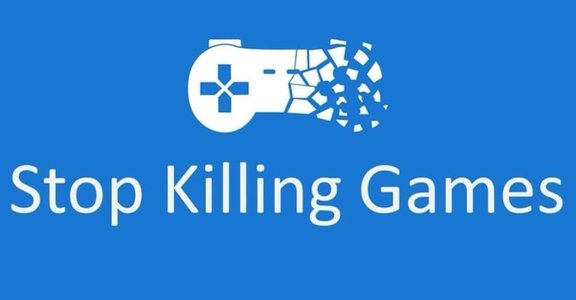
Stop Killing Games Petition Hits 1.4 Million Signatures Ahead of Deadline
July 22, 2025

FANTASTIC FOUR Skins Arrive In FORTNITE On July 25th Alongside MCU Movie Release
July 22, 2025

"Nothing is written in stone." Ubisoft head responds to Stop Killing Games petition
July 21, 2025
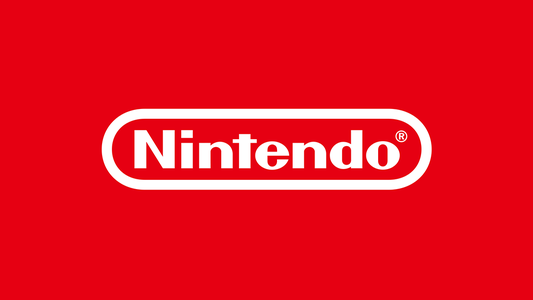
Nintendo records reveal that staff numbers are up – and employees rarely leave
July 21, 2025
Blog

VMOS Open-Source: New Threat to Game Security
July 18, 2025

How Games Detect Black and Gray Studio
July 15, 2025

How Games Detect iOS Jailbreaks
July 11, 2025

FPS Game Anti-Cheat Solution
July 9, 2025

Black and Gray Industry Insights: HappyMod
July 7, 2025

Online Game Anti-Cheat Solution
July 4, 2025

iOS Code Encryption Solutions
June 26, 2025

Casual Game Security Risks Analysis and Solutions
June 25, 2025

Unity Resources Randomization Encryption Solution
June 19, 2025

Speed Hack Mechanism Analysis and Countermeasures
June 18, 2025
Random

I found a compact power station with solar charging, and it's a new off-grid essential
July 19, 2025

Iranian Hackers Deploy New Android Spyware Version
July 21, 2025

FANTASTIC FOUR Skins Arrive In FORTNITE On July 25th Alongside MCU Movie Release
July 22, 2025

I took a walk with Meta's new Oakley smart glasses - they beat my Ray-Bans in every way
July 19, 2025

OBLIVION REMASTERED Developer Virtuos Reportedly Laying Off 300 Employees Amid Industry Wide Cuts
July 19, 2025

"Nothing is written in stone." Ubisoft head responds to Stop Killing Games petition
July 21, 2025

Library cuts across Massachusetts deepen digital divide
July 19, 2025

Sberbank prepares to offer cryptocurrency custody services
July 19, 2025

BATTLEFIELD 6 Open Beta Has Been Confirmed, Here Is What We Know About It So Far
July 22, 2025

Mistral's chatbot Le Chat takes on ChatGPT with major upgrade
July 19, 2025
Most Views
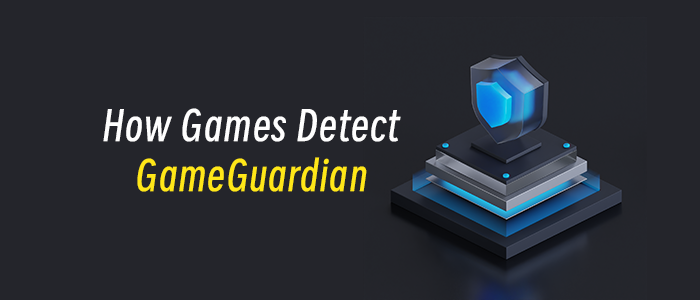
How Games Detect GameGuardian
March 17, 2025

Explanation of Game Anti-Cheat Solutions
March 17, 2025
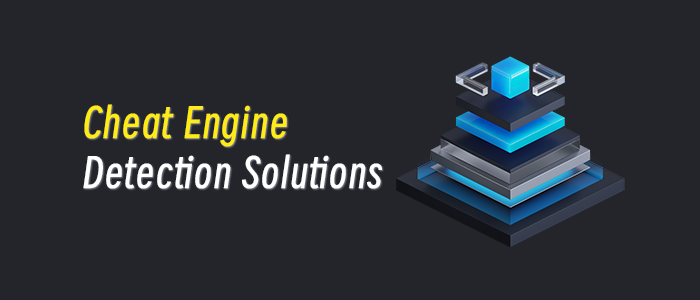
Cheat Engine Modifier Detection Solutions
March 18, 2025

Explanation of Unity Engine Encryption Solutions
March 17, 2025

How to Anti Hack in Client-Side Games
May 21, 2025

Cocos Engine Encryption Solution
April 8, 2025

How Games Anti-Debugging
April 15, 2025

Cloud Phone Detection Solution for Gaming
May 21, 2025

How Games Detect Frida
March 25, 2025

How Games Detect PlayCover
March 26, 2025


